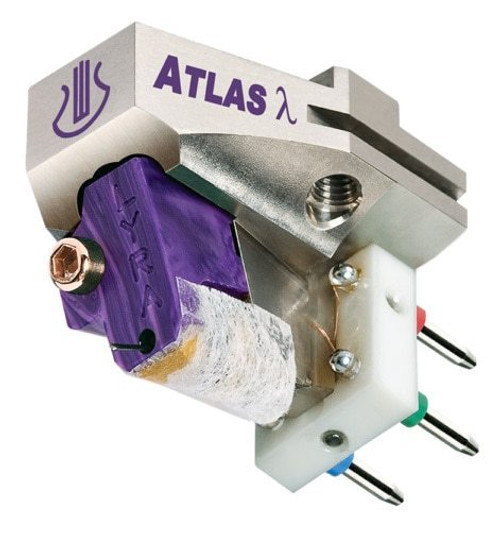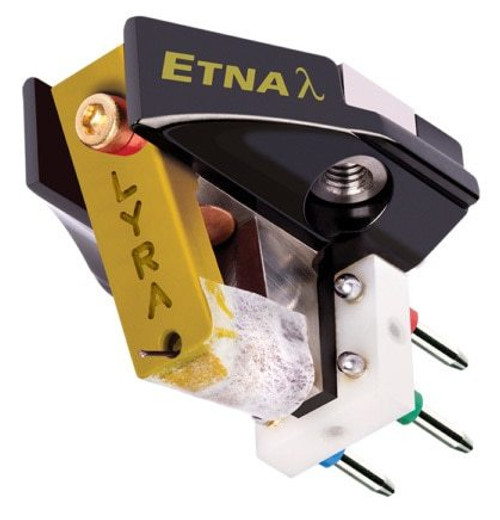While vinyl records played back with an MC cartridge can sound exceptionally good, it is a surprising fact that the design of conventional MCs restricts the sound quality that can be achieved from LPs.
An essential factor for proper operation of an MC cartridge is the angle between the magnetic circuit, signal coils and core. Performance is optimal when the angles are all aligned, but any significant difference in the angles will cause the formation of a strong and directional flux that will flow constantly from the magnetic circuit into the signal core. This directional magnetic flux will orient the core toward a specific direction and make it impossible for the core to move with equal ease in all directions, which is necessary for proper cartridge performance.
Unfortunately, conventional MC cartridges have been designed so that the angles between magnetic circuit, signal coils and core become aligned only when tracking force is not applied. The result is that during playback, the required tracking force causes the angle between magnetic circuit, signal coils and core to become misaligned. This limits the cartridge’s resolution, tracking ability and dynamic range.
The new Lyra Delos is designed to conquer this problem. Compared to conventional cartridges, the Delos has a new body structure with an unusually shallow angle, and this has been paired with a unique asymmetrical damping system. When no tracking force is applied, the shape of the asymmetrical dampers forces the signal coils and core into a more upright angle than the magnetic circuit.
However, no tracking force applied means that the cartridge is not operating, and therefore any angular discrepancies between magnetic circuit, signal coils and core will have no effect on performance. When tracking force is applied, however, the force of the stylus pushing on the LP causes the asymmetrical dampers to be deformed into a symmetrical shape, and when this happens the angular discrepancies between magnetic circuit, signal coils and core all disappear. Since tracking force applied means that the cartridge is now operating, it should be clear that the design of the Delos is able to keep the angles between the magnetic circuit, signal coils and core aligned during playback.
Keeping the proper angular alignment prevents the formation of any strong and directional flux that could otherwise flow constantly from the magnetic circuit into the signal core, and enables the Delos’ core to move with equal ease in all directions, for optimal performance.
The Delos also has a microridge stylus on a boron cantilever for outstanding tracking, a non-parallel solid machined metal body for low resonances, and 6-N high-purity copper coils and nude construction for greater clarity. The result is clearly improved sound quality, particularly resolution, tracking ability, dynamic range, transient impact and immediacy.
Feel free to audition the Lyra Delos, and hear how good a New Angle can make your LPs sound.
Specifications for Lyra Delos
- Designer: Jonathan Carr
- Builder: Yoshinori Mishima (final build, testing), Akiko Ishiyama (primary build)
- Type: Medium weight, medium compliance, low-impedance moving coil cartridge
- Stylus: Namiki microridge line-contact nude diamond stylus (2.5um x 75um), surface-mounted
- Cantilever system: Solid boron rod with short one-point wire suspension, directly mounted into cartridge body
- Coils: 3-layer deep, 6N high-purity copper, square-shaped high-purity iron former, 6.3ohm self-impedance, 9.5uH inductance
- Output voltage: 0.6mV@5cm/sec., zero to peak, 45 degrees (CBS test record, other test records may alter results)
- Frequency range: 10Hz ~ 50kHz
- Channel separation: 30dB or better at 1kHz
- Compliance: Approx. 12 x 10cm/dyne at 100Hz
- Vertical tracking angle: 20 degrees
- Cartridge body: One-piece machining from solid 6063 aluminum billet, partially non-parallel shaping, body threaded directly for mounting screws
- Cartridge mounting screws: 2.6mm 0.45 pitch JIS standard
- Distance from mounting holes to stylus tip: 9.5mm
- Cartridge weight (without stylus cover): 7.3g
- Recommended tracking force: 1.7g – 1.8g (1.75g preferred)
- Recommended load directly into MC phono input: 97.6ohm ~ 806ohm (determine by listening, or follow detailed guidelines in instruction manual)
- Recommended load via step-up transformer: 5 ~ 15ohm (step-up transformer’s output must be connected to 10kohm ~ 47kohm MM-level RIAA input, preferably via short, low-capacitance cable)
- Recommended tonearms: High-quality pivoted or linear (tangential) tonearms with rigid bearing(s), adjustable anti-skating force, preferably VTA adjustment












